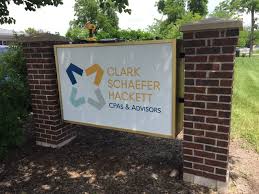If you own a building or have renovated a building in the last few years, you can likely benefit from a cost segregation study.
Cost segregation studies separate real property into various depreciable categories. Most real property is depreciated over 27.5 years (for residential rental) or 39 years (for nonresidential). By performing a cost segregation study, you can reclassify a portion of that real property into personal property. These newly created asset classes depreciate at a much faster rate—normally 5, 7 or 15 years.
With the passage of the Tax Cuts and Jobs Act (TCJA) in 2017, 100% bonus depreciation was enacted, allowing a 100% deduction for most tangible asset classes with lives less than (or equal to) 20 years. These faster deductions allow owners to lower their current-year tax liability and free up more capital to invest in their business. Owners must keep in mind, however, that depreciation deductions must be “recaptured” upon the sale of the property.
When a building is sold, the seller will have to pay tax on the previous depreciation taken. Because this tax is meant to bring the owner back to square one, it is often referred to as “recapture” tax. The issue of recapture is present in all real estate sales where depreciation has been taken on the property, whether or not cost segregation has been performed. In cases where cost segregation has been performed, the recapture tax is generally higher because the depreciation previously taken was higher. Due to the concept of recapture, the true benefit of cost segregation lies in the ability to take deductions sooner rather than later and is often measured by the time-value of money.
For estate planners and lawyers working with estates, cost segregation studies can be of even greater benefit than simply the time-value of money. When a person dies, the value of their property is based on the fair market value at the time of death. This fair market value is used for both estate tax purposes as well as the heir’s basis in said property. Because this is commonly an increase in the heir’s basis, it is often referred to as a step-up in basis. As a result of this step-up, any capital gains that accrued on the property during the decedent’s life avoid tax permanently. If a cost segregation study is performed on a building that was purchased in a prior year and before the final tax return is filed (including extensions), there will be no depreciation recapture. In this case, the benefits of the study will become permanent.
Take the following example:
Sylvia owns a residential rental building that she purchased in 2017 for $1,000,000 (not including land). On June 1, 2019, Sylvia passes away and leaves the building to her son, Jason. The decedent’s final income tax return, due April 15, 2020, has a projected tax liability of approximately $200,000.
A cost segregation study was commissioned by the executor and found $211,375 of additional depreciation deductions. The decedent’s final tax return will now include a one-time adjustment to claim the additional deductions that were found in the study. As a result, the projected tax liability of $200,000 was reduced to $126,864, creating a permanent tax benefit of $73,136.
Jason will then receive a step-up in basis, equal to the fair market value on June 1, 2019, and will begin the depreciation process all over again.
As the above example illustrates, after the death of the decedent, the cost segregation study and the deduction of the corresponding depreciation (that isn’t subject to recapture), the property will be passed to the heirs. The heirs will now have a basis in the building equal to the fair market value at the time of the decedent’s death and they too can perform a cost segregation study on the building. They will receive the same benefits of accelerated depreciation on the newly reclassified assets. This strategy will also work with estate planners whose clients own property and are not likely to sell the assets before death.
When a cost segregation study is performed on property that was purchased in a prior year, IRS Form 3115 (Application for Change in Accounting Method) is completed. This form allows a current year “catch-up” depreciation expense that results from reclassification of the real property to personal property from a prior year. This additional depreciation (known as a “481(a) adjustment”) can be quite large and may significantly reduce current-year tax liability for the client, as illustrated in the example above.
When working with lawyers and estate planners, as well as clients that own property, there are two primary benefits to a cost segregation study. First, the client gets the benefit of the study pertaining to the time value of money and permanent tax savings upon death. Second, the heirs get a step-up in basis and the opportunity to perform a study on their newly acquired property. Contact your CSH advisor for help realizing the benefits of cost segregation studies for estates.













